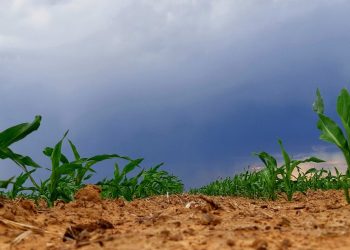
Many producers believe that they have the legal right to do what they want with the land that they own, but this is far from the truth when it comes to listed activities and environmental impact assessments. This mindset has led to the issuance of many hefty fines when environmental impact assessments have not been conducted before the onset of certain activities.
There are many producers who do not conduct environmental impact assessments because they don’t know about the legal requirements behind it. This article aims to provide answers to the most common questions regarding environmental impact assessments, with specific focus on producers, to ensure that they remain within environmental legal compliance and avoid any hefty fines.
What are environmental impact assessments?
The Environmental Impact Assessment Regulations of 2014, which fall under the National Environmental Management Act (no. 107 of 1998), define an environmental impact assessment (EIA) as a systematic process for identifying, assessing and reporting on the environmental impacts related to the associated activity.
EIAs are essentially the baseline for environmental management in South Africa. There are two types of EIAs in practice: A basic assessment or the full scoping and EIA process. The full scoping and EIA process can be much more complex than the average basic assessment and may include various specialist reports, depending on the type and scale of the associated activity.
Why are EIAs important?
These assessments are of utmost importance to ensure sustainable economic development whilst conserving and protecting the natural environment.
In South Africa, it is a legal requirement for certain planned activities to first be subjected to an EIA for the proposed activity to be authorised by law, after which it may commence, provided that all listed conditions are adhered to. This process is strictly regulated and monitored by the environmental authorities.
When should an EIA be conducted?
Listing Notices 1, 2 and 3 of the regulations outline all listed activities that require environmental authorisation before they may commence, meaning that an environmental impact assessment must be conducted as per the regulatory requirements.
It is important to note that activities that were operational prior to the year of 2014, may be regarded as existing facilities if sufficient proof of the date of establishment can be provided.
The published listed activities that have been applicable for associated developments since 2014 are far too many to mention in this article. But some of the most common listed activities, applicable to the agricultural sector, are the following:
- Slaughtering facilities and infrastructure with a daily throughput of 50 poultry or six units of red meat.
- Feedlots or other facilities intended for the concentration of animals where densities exceed more than:
- 20 m² per large livestock animal (such as cattle, horses and wild antelope) or more than 500 of these animals per facility.
- 8 m² per small livestock animal (such as sheep, goats and small game) and where there are more than 1 000 animals, or 250 animals per facility in the case of adult pigs.
- Commercial farming facilities where more than 1 000 poultry animals (aged 20 days and older) will be located within an urban area, or 5 000 poultry animals (aged 20 days and older) in locations outside of urban areas.
- Hatcheries where more than 5 000 chicks (younger than 20 days) will be housed per facility located in an urban area, or more than 25 000 chicks (younger than 20 days) housed per facility outside of urban areas.
- The construction and operation of agri-industrial facilities or hatcheries, located outside of industrial zones, where the entire footprint of the activity will cover an area of 2 000 m² or more.
- The establishment of a dam with a surface area that exceeds 100 m² and where the dam is located within 32 metres from the edge of an existing watercourse or in front of a development setback (a setback line as determined by the competent authority).
- The establishment of facilities for the storing and handling of dangerous goods, such as pesticides and diesel, where the associated containers have a combined capacity of 80 cubic metres or more.
- The physical alteration of virgin soil, meaning land that has not been cultivated for the past ten years for agricultural purposes (including cultivation and the raising of livestock) over an area of 100 ha or more.
It is important to note that any intended expansion of any listed activity will likely require a formal amendment of the existing environmental authorisation before the expansion can commence. EIAs and the application process are a timely endeavour that can take anywhere from six months to over a year to complete, depending on the type and circumstances of the intended activity.
Who conducts EIAs?
- You will need the services of an environmental assessment practitioner (EAP). It is legally required that the appointed EAP must be independent, suitably qualified and experienced in conducting EIAs.
- South African EAPs are registered with The Environmental Assessment Practitioners Association of South Africa (EAPASA).
- A register of qualified EAPs and their contact details can be viewed on EAPASA’s website (eapasa.org).
Consequences of non-compliance
A person who has started with the development of a listed activity without an approved environmental authorisation, could face a maximum possible fine of R10 million or imprisonment not exceeding ten years (or both).
Summary listed activities and environmental impact assessments can be quite complex and overwhelming. Fortunately, it’s not up to the farmer to go through all the details and type the reports.
It is, however, the producer’s responsibility to appoint a suitable EAP to do the job. It is of utmost importance to enquire about the possible EIA requirements of a proposed activity well in advance, instead of assuming that an EIA will not be required, only to be issued with a hefty fine or imprisonment later down the line. Save yourself the trouble and contact an EAP to advise accordingly.
References
- Barter H, (n.d.). Environmental impact assessments in South Africa: Navigating the legal essentials for sustainable development. Retrieved from Barter McKellar: https://www.bartermckellar.law/environmental-law-explained/environmental-impact-assessments-in-south-africa-navigating-the-legal-essentials-for-sustainable-development [20 March 2024]
- EAPASA, (2023). What is EAPASA? Retrieved from Environmental Assessment Practitioners Association of South Africa: https://eapasa.org/about-us/ [25 March 2024]
- Western Cape Government Environmental Affairs and Development Planning, (n.d.). Environmental impact assessment (EIA): An introduction. Cape Town








